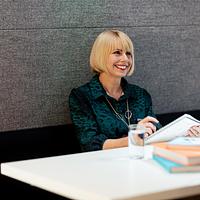The furore of the last few days with regards to slogans and lockdown-lift planning has reinforced a soapbox that I like to stand on occasionally (just ask my colleagues and friends!). People like clarity. The specific over the generic. Humans are tuned to respond to clear, unambiguous signals, ‘alert’ or not. And, especially when it comes to life-threatening environments.
Traffic lights are a case in point. You would think that traffic lights are rather redundant at the moment – given the relative lack of traffic on the roads. But in the world of Coronavirus planning, they are definitely ‘du jour’. The traffic light system has been talked of in many areas as a plan structure to ease the move out of lockdown in 3 stages.
Primarily, the system focused on the resumption of work, travel and social contact. The red stage seeing a very partial, cautious lift where small, low-risk shops and warehouses can reopen. The amber moves the focus to small businesses and education, and the relaxation of certain social distancing measures. The green phase brings us back to the new ‘normal’ – whatever that might be.
Though the red/amber/green approach here is at an economic level, this clearly understood structure may be helpful for individual organisations or businesses to address their plans in these incremental stages. From a human point of view, it is helpful for people to have a common frame of reference to work to. That they understand the parameters of the stage that they are in, and the rules associated with it. However, these steps only work if time and effort has gone into understanding the real, lived experience – to determine accurately the adjustments required and the impact they will have.
Take, for example, the challenges around the resumption of studies in higher education institutions – particularly for those embarking on their first year. Universities are already often viewed as a ‘hotbed’ of infection – people coming together from all over the world to live, study and party together. The result? Fresher’s Flu, Meningitis and other dubious afflictions. Add Covid-19 to this and it’s a heady, and deadly, mix.
But the student experience is complex. Not only are the newbies exposed to a variety of risky environments – lecture theatres, tutorials, libraries, clubs – their living quarters are often constricted and, dare I say it, often hygienically-challenged? They are desirous of social interaction – indeed it’s often the main reason for going to University. It’s hard enough to get the chat going with brand new friends – now add on that 2-metre rule, it becomes superficial, almost formal. And, they’re often in a new location. Walking the city just now is difficult enough within an allotted ‘exercise period’ – but in a new, unknown city it’s downright daunting.
All this comes at a difficult time for students who anxious about their new life, burdened also with worries about their health and that of their families.
Cautious steps into the unknown
As a mother of a worried school leaver, I would welcome an explicit staged plan. Where my daughter could get clarity on the parameters of her experience, and where I can support and reinforce them.
She would understand, for example, that she couldn’t visit her University of choice, and look round the Campus in the ‘red’ stage, but that within these restrictive parameters she could at least see YouTube drone footage of her halls of residence or where she is likely to study. She could meet virtually with key members of staff or visit online ‘meet-ups’ or chatrooms with future classmates. Ideally, getting to know her flat mates in her new living quarters in advance, so they could work out their social distancing ‘house rules’ in advance of meeting in person.
Once term has started in the ‘amber’ stage, she would understand that her classes may be split up, to ensure social distance in lectures for instance, and perhaps held in buildings other than that of her faculty, but that the signage is helpful, clear and directive. That there are apps and digital resources to make sure that she could plan her route and her day, safely and effectively.
And once it’s ‘green’ for go, she would not expect things to be back to ‘at home normal’, but with complimentary cleaning products and strategic behavioural cues at sinks, on floors and, inevitably, in the student union bar, she would understand how to carry on protecting herself and her new friends.
Asking the right people, the right questions
Of course, all of this requires an intimate knowledge of the real, lived, new student experience to get right. The questions they will have; the scenarios they envisage. And a deep understanding of how humans feel and think when they are embarking on a new life. Often, in the panic, this vital reflection and research is forgotten. Or worse, the solution is assumed. The communication vague and top-down. Indeed, many of the new rules and approaches we’re all living with right now – for example the intense, militaristic weekly shopping experience – feel strong-armed and clumsy. The retailer’s CEO-authored emails absent of real human understanding.
I’m a planner, and so the greyness of the moment doesn’t sit well with me. I’m also a service designer. So, I know that the genesis of good plans, good solutions and the right way of getting the message across, sit in the minds of the people with the lived experience. So, let’s ask them what their ideas are. Let’s get the worried school leavers and university students onside now and co-create the way of out this, using a structured unambiguous approach.
My worry is that in the muddle of politics, process and procrastination, the people and the possibilities become pushed aside.
Picture by Nathon Dumlao


